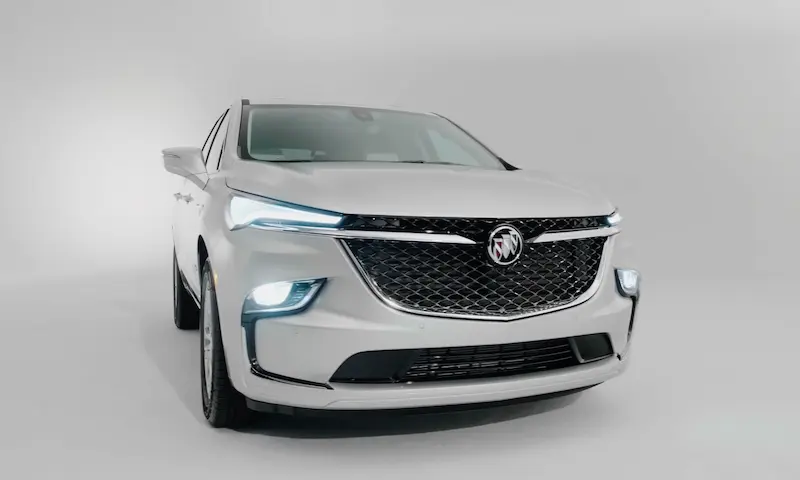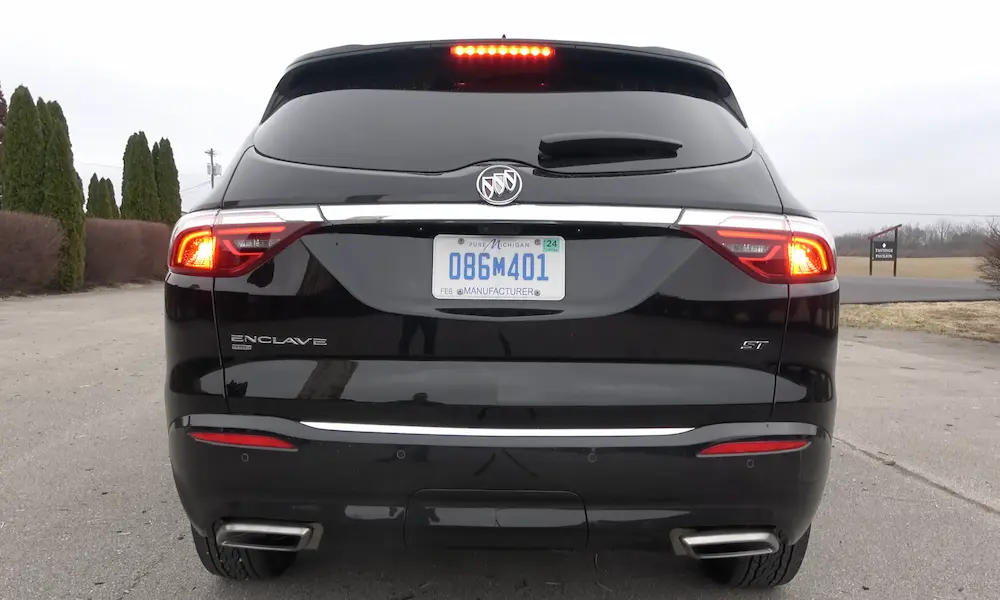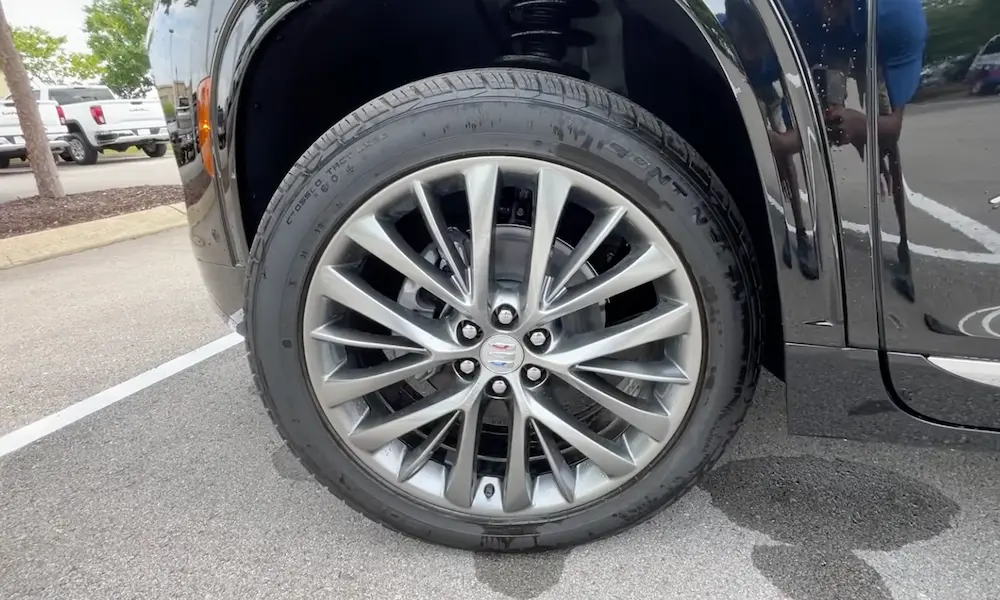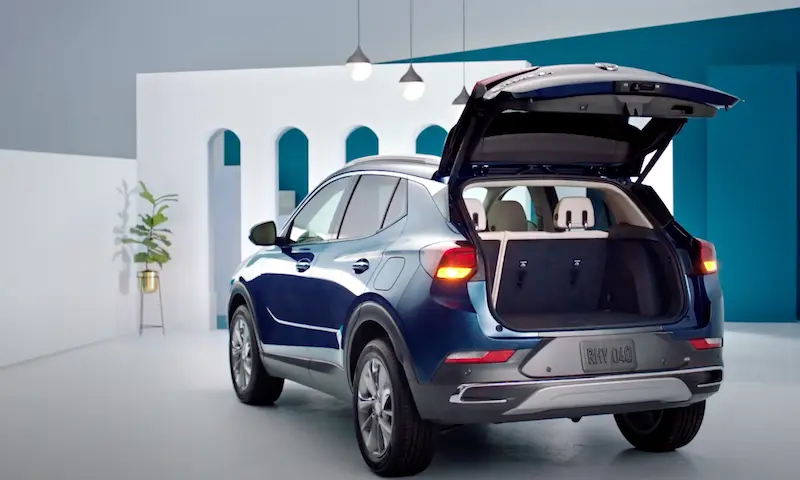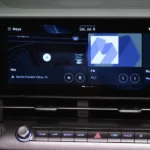Ever noticed that annoying tire pressure warning light that stays on even after you’ve filled your tires? You’re driving your Buick with properly inflated tires, yet that pesky light won’t go away. The solution might be simpler than you think – your Buick’s tire pressure sensors likely need a reset.
What Is a Tire Pressure Monitoring System (TPMS)?
Buick vehicles come equipped with a Tire Pressure Monitoring System that keeps you informed about your tire pressure levels. This safety feature uses sensors mounted either in the valve stems or directly on the wheels to monitor air pressure.
When these sensors detect pressure below the recommended level, they trigger the warning light on your dashboard. This system helps prevent accidents, improves fuel efficiency, and extends tire life.
The sensors are quite sophisticated – they transmit readings every 60 minutes when your Buick is parked and every 60 seconds when you’re driving. This design helps preserve battery life while ensuring your safety.
Why You Might Need to Reset Your Buick’s TPMS
Several situations can trigger the need for a TPMS reset:
- You’ve just inflated your tires to the proper pressure
- You’ve rotated or replaced your tires
- You’ve installed new TPMS sensors
- The battery in a sensor was recently replaced
- You’ve swapped between winter and summer tires
- The warning light is incorrectly illuminated
Without a reset, your Buick’s computer system won’t recognize that the tire pressure issue has been resolved, leaving you with an annoying warning light that no longer serves its purpose.
General Reset Methods for Most Buick Models
While specific procedures vary by model year and vehicle type, here are two common approaches that work for many Buick vehicles:
Method 1: Using the Dedicated Reset Button
If your Buick has a physical TPMS reset button:
- Make sure all tires (including the spare, if applicable) are properly inflated to the pressure listed on your driver’s side door jamb
- Turn the ignition to “ON” position (don’t start the engine)
- Find the TPMS reset button (usually located under the steering wheel)
- Press and hold the button until the tire pressure light blinks three times
- Start your Buick and drive for about 20 minutes at speeds above 30 mph to complete calibration
Method 2: Using the Driver Information Center (DIC)
For Buicks with a digital information center:
- Make sure all tires are properly inflated
- Start the vehicle and set the parking brake
- Navigate to the vehicle information menu using the steering wheel controls
- Scroll to the “Tire Pressure” option
- Press and hold the SET/RESET button for about 5 seconds
- Select “YES” when prompted to confirm relearn mode activation
- The horn will typically chirp to confirm the system is in relearn mode
Model-Specific Reset Procedures
Buick Enclave (2008-2023)
The Enclave follows a specific sequence that requires a special tool for most model years:
- Set all tires to the recommended pressure
- Turn the ignition to “ON” position
- Press and hold the SET/RESET button until you hear two horn chirps
- The left front turn signal will light up, indicating the system is ready for that tire
- Use a TPMS activation tool (J-46079 or equivalent) near the valve stem
- A horn chirp confirms successful sensor registration
- Proceed to each tire as indicated by the turn signals (typically clockwise: LF, RF, RR, LR)
For newer Enclaves (2018+), you might be able to complete this process using the DIC menu system instead of a special tool.
Buick Verano (2012-2017)
The Verano has two different procedures depending on whether you have push-button start:
For push-button start models:
- Start the vehicle and engage the parking brake
- Navigate to the information menu and find Tire Pressure
- Hold the SET button for 5 seconds
- Select YES to enter Tire Relearn Mode
- Use a tire diagnostic tool to activate each sensor, starting with the front left tire
For traditional key ignition:
- Turn the key to the ON position
- Hold the LOCK/UNLOCK button on your key fob for 5 seconds to initiate the relearn process
- The horn will chirp to confirm entry into relearn mode
- Proceed with activating each tire sensor in sequence
Buick Regal (2011-2020)
The Regal’s reset procedure is particularly important to follow in sequence:
- Fill all tires to the recommended pressure
- Use the DIC controls to access the tire pressure menu
- Press and hold the Set/Reset button (check symbol) until the horn chirps
- The system will prompt you to begin with the left front tire
- Activate each sensor in order: left front, right front, right rear, left rear
- Turn signals will illuminate to indicate which location to relearn next
- Listen for the horn chirp that confirms each successful sensor registration
Buick LaCrosse (2010-2019)
For the LaCrosse, follow these steps:
- Set all tires to the proper inflation level
- Turn the ignition to ON
- Use the DIC button to navigate to the tire pressure display
- Press and hold the SET/CLR button until the system confirms relearn mode
- Start with the left front tire and use a TPMS activation tool near the valve stem
- Wait for the horn chirp before moving to the next tire
- Complete all four tires in the sequence indicated by the system
The Driving Recalibration Method
Some newer Buick models (2020+) offer a simpler approach that doesn’t require special tools:
- Ensure all tires are properly inflated
- Go through the reset procedure using the DIC menu
- Drive your Buick at speeds above 50 mph for 15-20 minutes
- The system will automatically recalibrate and turn off the warning light
This method works because the sensors can establish their baseline readings during sustained driving conditions.
Common TPMS Reset Problems and Solutions
TPMS Light Won’t Turn Off After Reset
If the warning light persists after performing a reset:
- Double-check your tire pressure – Even small variations can trigger the system. Use a quality gauge to verify each tire is precisely at the recommended PSI.
- Complete the driving calibration – Some Buick models need that 15-20 minute drive at highway speeds before the system will fully reset.
- Battery issues – If your TPMS light flashes instead of staying solid, it often indicates a failing sensor battery. These batteries typically last 5-10 years before needing replacement.
- Temperature fluctuations – Significant weather changes can affect tire pressure. Allow your tires to reach a stable temperature before attempting a reset.
Error Messages During Reset
If you see messages like “SERVICE TIRE MONITOR” or the system fails to enter relearn mode:
- Make sure you’re following the exact sequence for your specific Buick model
- Check that the battery in your remote key fob is good (some models use the fob in the reset process)
- Be aware that some relearn modes time out after 2 minutes of inactivity
- Try turning the ignition off completely and restarting the process
TPMS Tools You Might Need
While some newer Buick models can reset without special equipment, many require a TPMS activation tool. These tools emit a magnetic signal that activates the sensors during the relearn process.
Basic TPMS tools cost between $40-$100 and can be found at auto parts stores or online. Professional-grade diagnostic tools used by mechanics typically cost $200-$600 but offer additional capabilities.
If you don’t want to purchase a tool, many auto parts stores offer free TPMS diagnostics and can help reset your system.
Understanding Buick’s TPMS Warning Indicators
Buick uses different warning indicators to communicate specific TPMS issues:
Solid TPMS Light: At least one tire is significantly under-inflated
Flashing TPMS Light: There’s a system malfunction, such as a faulty sensor
“CHECK TIRE PRESSURE” Message: Individual tire pressure readings are outside acceptable range
“SERVICE TIRE MONITOR” Message: The TPMS system itself needs maintenance
Understanding these distinctions helps you determine whether a simple reset will solve your issue or if professional service is needed.
The Importance of Maintaining Your TPMS
According to the National Highway Traffic Safety Administration, properly maintained tire pressure is crucial for vehicle safety. Underinflated tires can lead to:
- Reduced vehicle handling capability
- Increased stopping distance
- Greater risk of blowouts
- Decreased fuel economy (up to 3% loss)
- Accelerated tire wear
Your Buick’s TPMS is designed to prevent these issues, but it can only do its job when properly maintained and reset when needed.
TPMS Sensor Replacement Considerations
TPMS sensors don’t last forever. If your reset attempts fail, you might need new sensors. Here’s what to know:
- Sensors typically last 5-10 years before battery failure
- Replacement sensors cost $40-$100 each (plus programming)
- Many tire shops can replace and program sensors when you get new tires
- Sensor replacement often requires a professional with specific programming equipment
- After replacement, a complete TPMS reset is necessary
Best Practices for Buick TPMS Maintenance
To keep your TPMS working properly:
- Check your tire pressure monthly with a quality gauge
- Always reset the system after tire inflation, rotation, or replacement
- Ensure new tires are compatible with your existing sensors
- Have sensors checked during regular service intervals
- Keep your owner’s manual handy for model-specific instructions
- Consider seasonal tire pressure adjustments (higher in winter, lower in summer)
The Road Ahead: Digital TPMS Technology
Newer Buick models increasingly feature more advanced TPMS technology, including:
- Individual tire pressure displays on the digital dashboard
- Automatic system recalibration without manual resets
- Smartphone integration for tire pressure monitoring
- Predictive analysis that warns of gradual pressure loss
These advancements make maintaining proper tire pressure easier but still require occasional resets when sensors are replaced or batteries fail.
By understanding how to reset your Buick’s tire pressure sensors, you’re not just turning off an annoying light – you’re ensuring one of your vehicle’s important safety systems continues working as designed. This small maintenance task helps maximize fuel efficiency, extend tire life, and most importantly, keep you and your passengers safe on the road.



